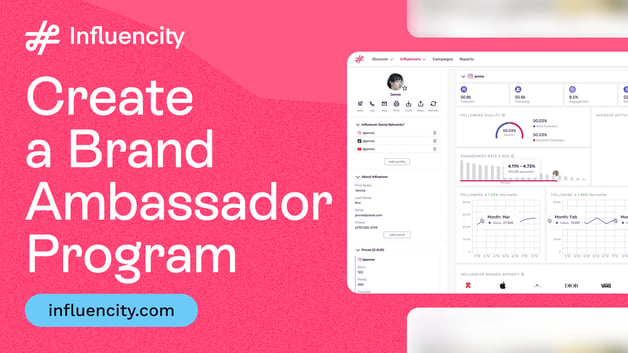Influencer Tracking: How to Measure the Performance of Influencers and Analyze Their Audience
Collaborating with an influencer can be one of the most effective ways to market your brand or product, especially if you are targeting a younger audience. An influencer can help you reach a larger audience and build trust and credibility in your business. However, getting an influencer to promote your campaign is only half the battle. You also need to make sure you measure their results to ensure the proper Return on Investment (ROI). To do this, you need the right influencer tracking tools.
Is your influencer performing as expected? How is their audience responding to your campaign? Is it worth the investment?
In this post, we’re going to take a deep dive into the world of influencer tracking. Use these tips to learn how to set up your campaigns correctly so you can see their impact and improve your future influencer marketing efforts.

Establish your goals
The first thing you need to do before you begin any influencer tracking activities is establish your campaign goals. This will help you identify which influencer marketing metrics you need to track in order to determine if an influencer is performing well and your investment is paying off.
Here are a few examples of what your goals might be:
- Brand awareness: how familiar your target audience is with your brand. This is perhaps one of the most common influencer campaign goals.
- Engagement: how much your target audience is connecting and interacting with your influencer campaign posts. Depending on your overall campaign goals, this might mean visiting your website, subscribing to your mailing list, or simply asking questions about your brand or product. These are all high-value actions that indicate that someone is more likely to make a purchase (micro-conversions).
- Sales: your goal might simply be achieving more sales. For this goal, you can track revenue, average order value, and influencer sales conversion rates, for example.
Set up your campaigns for trackability
Once you’ve established your campaign goals and you know what metrics you want to track, it’s time to set up your campaigns for trackability. UTMs can be a great tool for this.
A UTM (Urchin tracking module) is a simple code that you can attach to a custom URL in order to track a source, medium, and campaign name. UTM codes enable Google Analytics to tell you where searchers came from as well as what campaign directed them to you.
Here are a few examples of UTM tags you can use as part of your influencer tracking strategy:
- Source: tracks the channel where traffic has originated.
- Medium: categorizes website traffic channels like social, email, organic, or paid.
- Campaign: to obtain specific data on the exact purpose of your link.
- Content: useful for comparing different types of content, especially if you’re A/B testing.
You can create your own trackable URLs with Google’s Campaign URL Builder.
Compare your influencer marketing results
As we just mentioned, UTM influencer tracking is a great tool for comparing your influencer marketing efforts to your organic, social, and paid ads campaigns. That way, you get a clearer idea of how your influencer marketing campaign fits in with your overall marketing strategy. In other words, if your influencer is performing well enough to justify the investment.
UTM parameters are a simple, straightforward, and reliable way to track traffic online. Just segment your data in Google Analytics by source and medium to get the data you’re after.
It’s important to keep in mind that building an effective influencer collaboration takes time. Unlike with paid ads where results are clearly visible, with an influencer, you’re paying for their ability to build connections with your target audience, and this won’t happen overnight. Keep this in mind when you compare your results.
Create unique coupon codes
If your goal is increasing sales, then using coupon codes can be an effective tool for influencer tracking, especially if you have hired multiple influencers and want to see how each is performing individually.
Coupon codes allow you to track sales and conversions before, during, and after a campaign. They allow you to measure the direct impact of an influencer on your business’ bottom line.
The easiest way to do this is to create a unique coupon discount code for every influencer to use. Get them to include this code in their promotions and encourage their followers to use them whenever they make a purchase from your site. That way, you can track how effective each influencer’s campaign is.
Streamline the process with automated tools
You can, of course, use each of the influencer tracking tools we’ve mentioned today manually. However, many individuals and agencies choose to streamline this process by using automated influencer marketing tools. Dedicated platforms like this give you a lot more insight into your campaigns, the influencers you work with, and also the audiences they reach.
For example, Influencity’s influencer marketing automation tool helps brands and agencies manage their campaigns from end-to-end. Not only does it allow you to see an influencer’s post performance, but it also gives you details about the audience you are reaching such as their age, gender, and location. With all this information at your fingertips, you can be sure you are getting the most from your campaign investments.
Tags:





















%20and%20How%20Can%20They%20Benefit%20Your%20Brand%20article.jpg?length=628&name=What%20Are%20Key%20Opinion%20Leaders%20(KOL)%20and%20How%20Can%20They%20Benefit%20Your%20Brand%20article.jpg)








